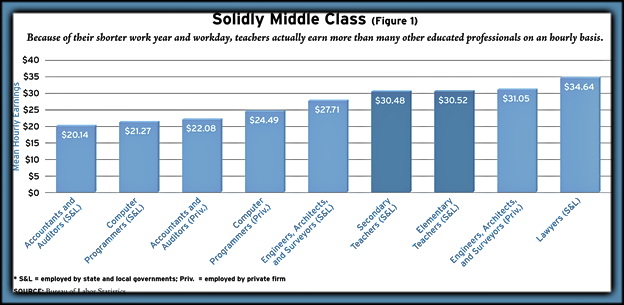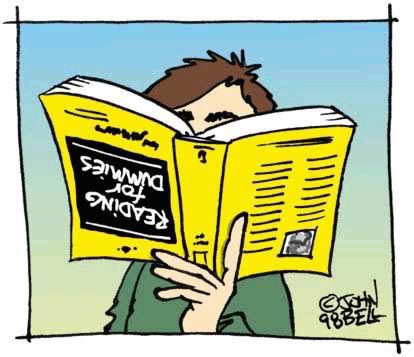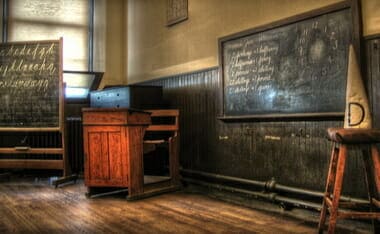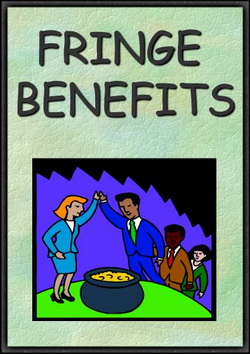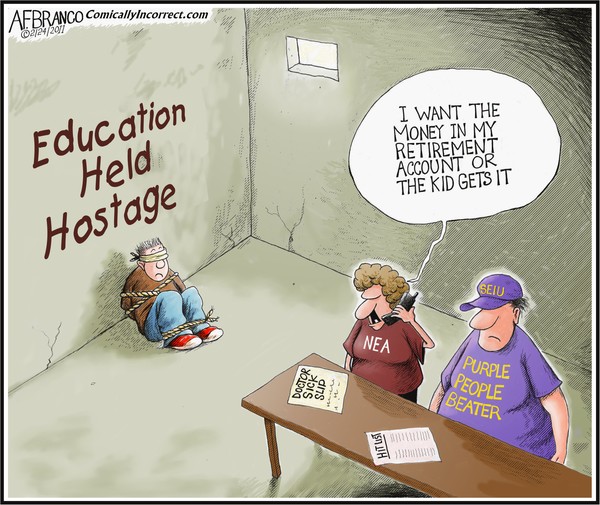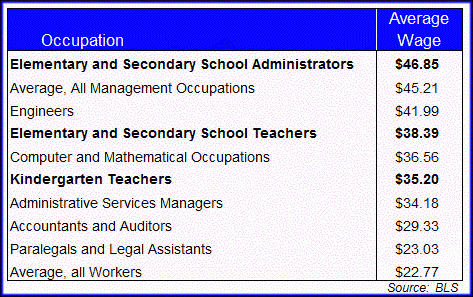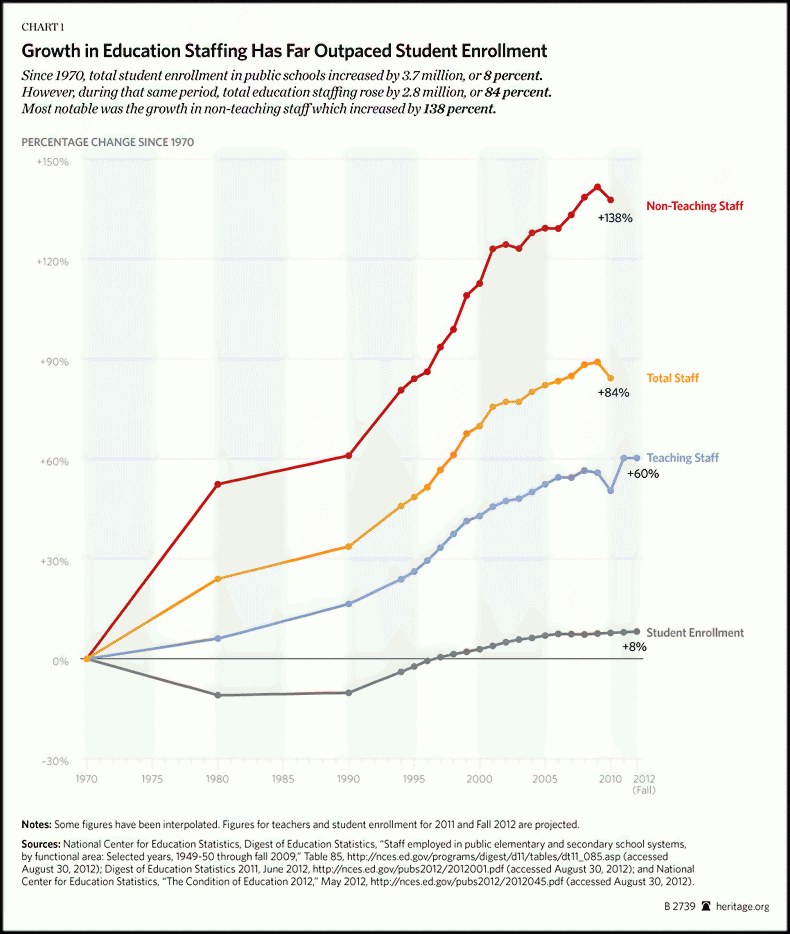Each year, the two national teacher unions, the American Federation of Teachers (AFT) and the National Education Association (NEA), release their surveys of public school teacher salaries across the nation. And each year, they take advantage of this opportunity to bemoan the condition of teacher pay. On the April 2002 release of the NEA’s data, then-NEA president Bob Chase complained, “It’s hard to convince someone to stay in the classroom when the salary is so low.” Likewise, the AFT decried the fact that the “average teacher salary continues to fall well below the average wages of other white-collar occupations.” The average teacher, according to the AFT, earned $43,250 during the 2000-01 school year, compared with an average of $52,664 for mid-level accountants; $71,155 for computer system analysts; $74,920 for engineers; and $82,712 for attorneys.
Of course, the AFT has chosen the comparison groups to make its best case. Where, one wonders, are the comparisons with journalists, registered nurses, assistant district attorneys, FBI agents, military officers, and other not-so-highly compensated professionals and public-sector employees? Shouldn’t the average pay of a high-school English teacher be compared with that of writers and editors? One could make a case that the salaries of high-school physics or calculus teachers should bear some resemblance to those of computer system analysts, but does the AFT believe that the appropriate compensation benchmarks for 3rd-grade teachers are the salaries of engineers or attorneys?
Nevertheless, data from the NEA and AFT are highly influential. Indeed, the U.S. Department of Education collects few data of its own on this matter. For the most part it simply recycles these union data in publications like the Digest of Education Statistics 2001, a standard reference in which five of the six tables on teacher pay are based on union figures. On the whole, such data present a fairly accurate picture of teacher salaries at the national level and have some value for state-to-state comparisons. Yet they suffer from severe limitations when interest groups, policymakers, and pundits use them to make a point about how the nation values public school teachers.
Summers Off
One facet of teaching that the NEA and AFT, in their data and in their public pronouncements, routinely fail to account for is the shorter workday and work year. In public schools, the median number of school days is 180 per year. Add half-a-dozen or so workdays for parent conferences, professional development, and planning, and the annual work year for most teachers is still shorter than 190 days. By comparison, an accountant or lawyer with two weeks of paid vacation and ten holidays or personal days will work 240 days annually—nearly 30 percent more days per year than public school teachers.
The typical teacher also has a shorter on-site workday than most other professionals. On average, teachers report being in school for fewer than 38 hours per week. This number rises to 40 hours if largely voluntary after-school activities such as coaching or club sponsorship are included. In fact, language limiting the number of hours that teachers are required to be in school is common in their collective-bargaining agreements, particularly in urban school districts. In the just-expired New York City teachers’ contract, the contractual workday was just 6 hours and 20 minutes (including a 50-minute duty-free lunch). The new contract extends the workday by 20 minutes. In Chicago, the limit is 6 hours and 45 minutes, including a 45-minute duty-free lunch.
Of course, many teachers put in nights and weekends at home grading papers and planning for the next week. However, a job that permits relatively more work at home is typically more attractive (particularly to women with children) than one that requires a similar amount of work time on site. And many other professionals bring their work home as well.
The combination of a shorter workday and work year means that the annual hours on the job for teachers are much shorter than in comparable professions. Consider Figure 1, which shows hourly rates of pay computed by the Bureau of Labor Statistics for a variety of occupations. By these calculations, only engineers, architects, and surveyors in private practice and attorneys earn more than teachers on an hourly basis.
The shorter workdays and work year make teaching an attractive occupation to those who wish to balance work and family needs. The shorter hours are especially helpful to women who want both a rewarding career and children, which helps to explain why roughly 75 percent of teachers are women and the share is increasing. An additional plum is that the on-site teaching hours match the schedule of a teacher’s own school-age children. In short, when the kids are at home, so is mom (or dad).
Consider the “sick kid” challenge. In many professions it is very difficult to take unscheduled time off for a sick child or other family emergencies. In teaching, however, the “substitute teacher” solution is a routine part of school life. Indeed, in collective-bargaining negotiations, school administrators frequently complain of excessive absences among teachers. According to a recent U.S. Department of Education survey, during the 1999-2000 school year, 5.2 percent of teachers were absent on any given day on average. That translates into 9.4 days out of a 180-day school year. During the 2000-01 school year in New York City, the annual rate of absences reached 11.3 days per teacher. These rates are much higher than in other executive or professional employment. The Bureau of Labor Statistics reports that the absentee rate for managerial and professional employees is just 1.7 percent of annual hours.
Teaching is also family friendly in the sense that little or no out-of-town travel is required for successful job performance. Teachers may choose to attend out-of-town conferences, but such travel is unusual and not a condition of employment. Although I am not aware of any systematic data collected on this topic, out-of-town travel seems to be commonplace for many young professionals.
The expansion of opportunities for women during the past half-century is supposed to have lessened the attraction of teaching. And yes, the earnings of college-educated women in other fields have grown faster than the earnings of teachers in recent decades. However, the mix of nonteaching jobs that college-educated women hold has changed as well. In 1960, 58 percent of college-educated women not employed as teachers worked as secretaries or other clerical workers, and only 13 percent were “managers.” By 1990 the clerical share had fallen to 30 percent while the share of managers increased to 35 percent (as did the shares of lawyers, accountants, and doctors). This shift from clerical to managerial and professional employment resulted in an increase in nonteaching earnings, but it also meant longer workdays and work weeks, greater responsibility (and stress), and, probably, less flexibility compared with teaching.
The bottom line is that teaching remains a job that makes it easier for parents to reconcile a career and family. Consequently we would expect female teachers to have more children—which is exactly what we see: among college-educated women aged 40 and younger, the average teacher had 2.1 children, versus 1.7 for other occupations. Of course, some of this difference may simply reflect the fact that teaching attracts women who like children and who would have been predisposed to have more children anyway. However, the fact remains that teaching is a profession that makes it less costly for these women to act on their preferences……
